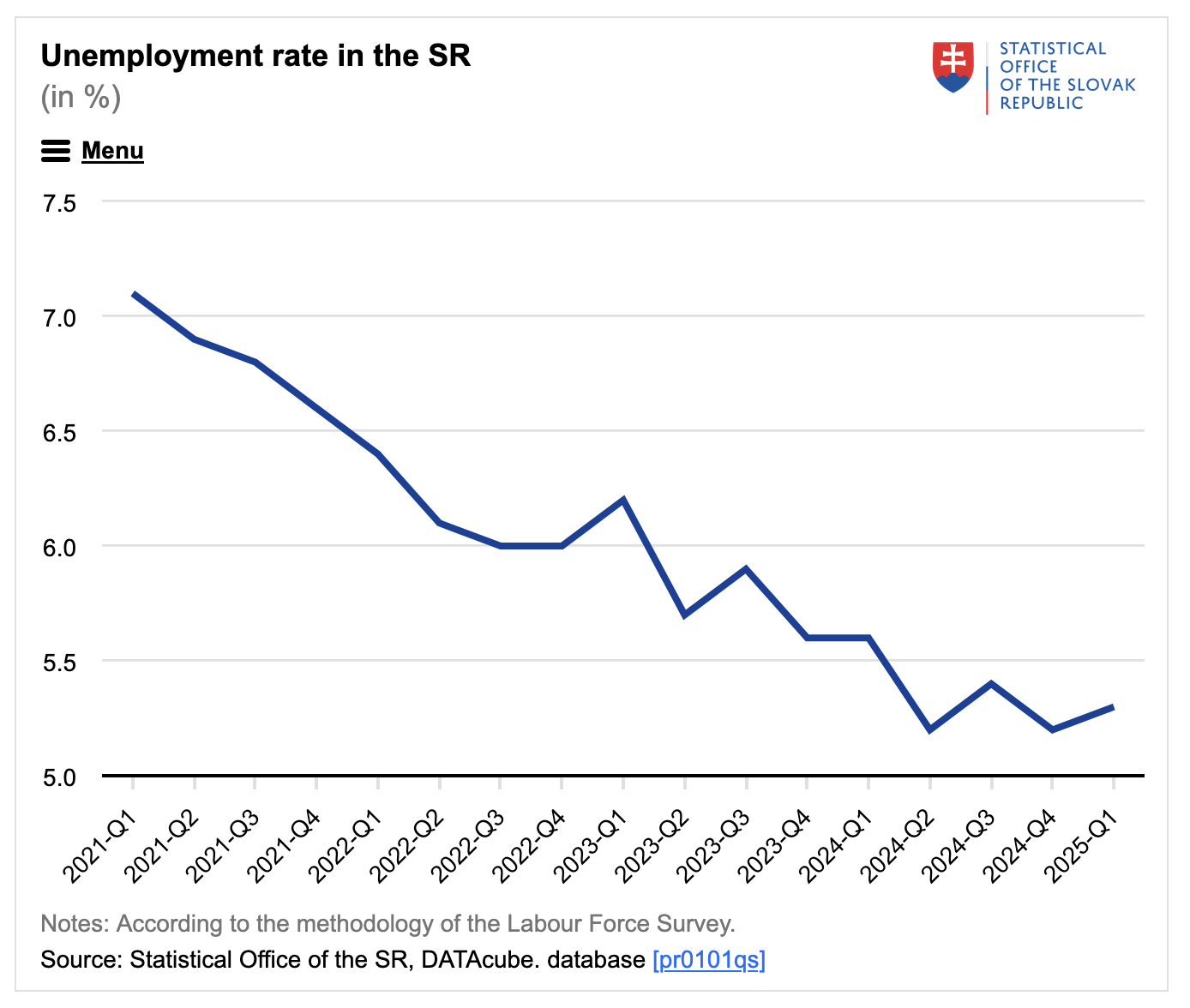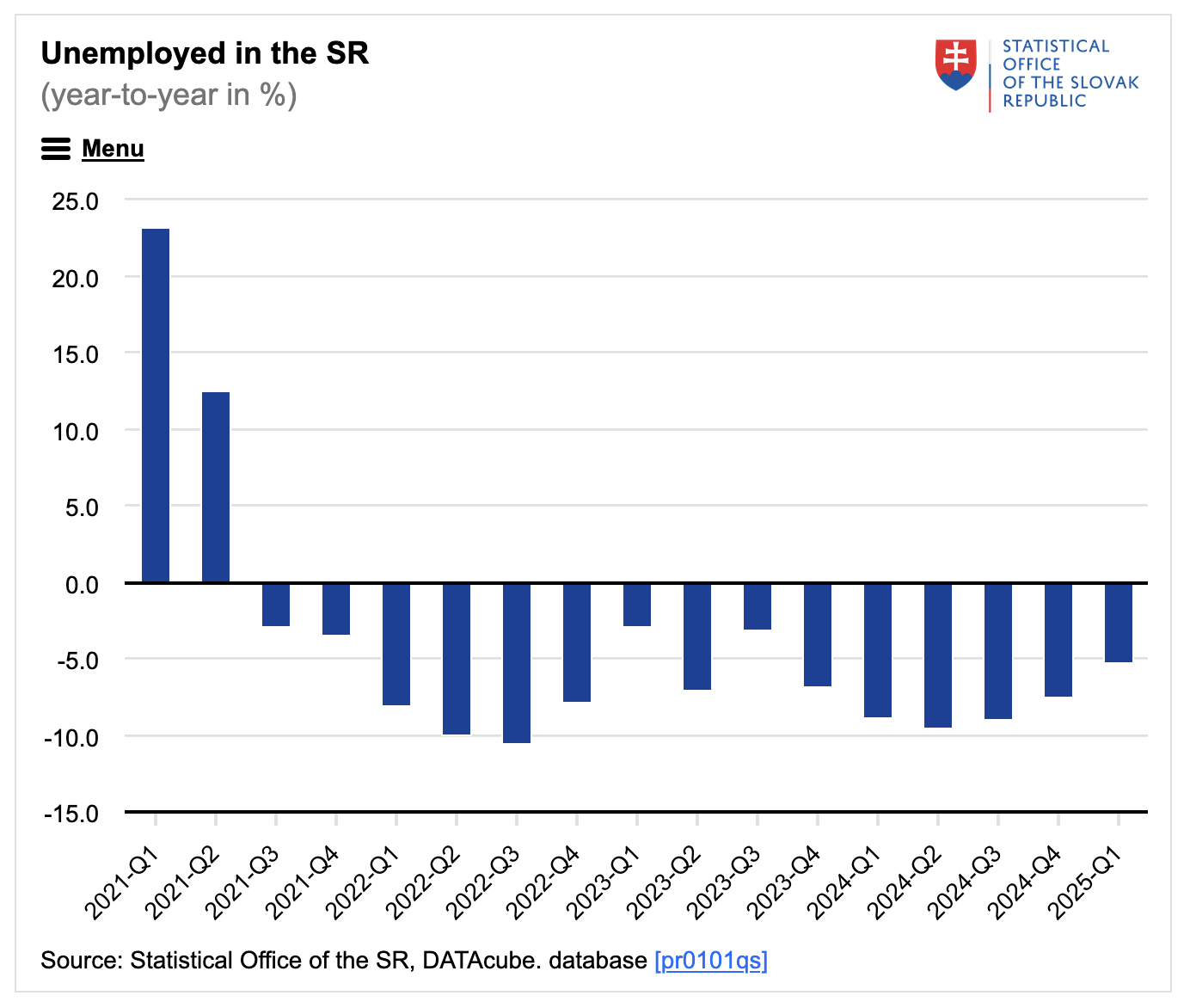Unemployment rate in Slovakia declines to 5.3% in first quarter of 2025
Unemployment in Slovakia continued to decline in the first quarter of 2025, reaching 5.3%, one of the lowest rates recorded in recent decades. According to the latest Labour Force Sample Survey (LFSS) from the Statistical Office of the Slovak Republic, the number of unemployed fell to 146,600, a year-on-year decrease of 8,200 people or 5%.
This decline was particularly notable among the long-term unemployed, defined as individuals without work for more than 12 months. Their number dropped by 9,000 to 93,400, representing a reduction of 8.8% compared to the same period last year.
Although there was a slight quarter-on-quarter increase of 0.1% after seasonal adjustment, overall unemployment remained low. Historical data show that only two quarters in the past three decades recorded marginally lower unemployment rates.
In terms of age groups, the most significant year-on-year decrease was seen among individuals aged 15 to 24, where unemployment fell by 25% (7,400 people). By contrast, unemployment increased slightly among those aged 55 and older.
Looking at previous employment sectors, the highest numbers of unemployed came from industry, trade, construction, and public administration. Public administration and social security saw the largest year-on-year increase in unemployment, rising by 3,400 individuals.
Approximately 32% of the unemployed—around 47,600 people—had never held a job, including recent graduates.
Regionally, six of Slovakia’s eight regions reported a year-on-year decline in unemployment. Košice and Trnava regions recorded the largest absolute decreases, with reductions of 5,000 and 2,300 unemployed persons, respectively. However, Prešov, Košice, and Banská Bystrica regions continued to account for around two-thirds of the total unemployed population.
The regional unemployment rates varied from 2.6% in Bratislava to 10.5% in Prešov. Western and northern regions of Slovakia generally recorded unemployment rates below 4%, while rates in Banská Bystrica and Košice remained above 7% and 8%, respectively.










